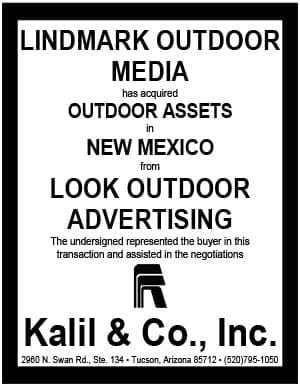 Yesterday Florida out of home attorney Jennifer Sloane talked about the importance of due diligence when you are acquiring an out of home company. Today she talks about out of home legal issues.
Yesterday Florida out of home attorney Jennifer Sloane talked about the importance of due diligence when you are acquiring an out of home company. Today she talks about out of home legal issues.
What’s the Florida regulatory landscape like for out of home?
From a state perspective, it’s quite favorable to outdoor. Whether it’s because Florida is one of the largest tourist destinations in the US (which comes with substantial lobbying dollars), or because the courts have routinely rejected the typical Scenic America argument, the State has tolerable restrictions for development on state regulated roadways. Reasonable spacing, height, setback and size regulations. The problem for the OOH industry in Florida is not so much regulatory as it is that everything is built out. All “easy” locations that meet code already have a billboard on it. If you want to get a new location in an established area, you must be extremely creative. You must negotiate creative agreements with local governments that give them a substantial benefit. You must do aggressive deals with stubborn landowners. You must conduct an ordinance challenge with 10+ signs in the pipeline to settle the lawsuit with 5 built signs. Despite the lack of opportunity, I still see creative developers pull out some great locations after years of commitment on a project.
What I find even more interesting is that some big land owners in Florida, like colleges or big tourist attractions, are finding ways to buy the signs they advertise on as a way of reducing their advertising overhead. They see the value of the asset and understand that even if they went out of business, they still own a valuable revenue generating structure.
Billboards are the bread and butter for so many businesses in this tourist mecca. Most Florida tourists rent vehicles because everything in our state is so spread out. This makes billboards that much more effective for the advertiser. For as long as Florida remains a top tourist attraction, I don’t see the State creating a negative regulatory environment for our industry.
Insider hears that Florida requires you to take down a billboard which is empty for 6 months.
It depends on the jurisdiction. Pursuant to Florida Administrative Code 14-10.007(6)(B), the State deems a non-conforming sign to be “abandoned” if the sign owner fails to operate and maintain the sign for a period of 12 months or longer. If the space is used for an “available space” ad, or displays a product that is no longer available, or is blank, it is considered a failure to operate and maintain. However, a public service message is not deemed a failure to operate and maintain; thus, it wise to have public service vinyls ready to install if you are close to the 12 month time frame. Despite these state regulations, many local jurisdictions within the State of Florida have adopted codes that define “abandoned” as being signs that have not been operated or maintained for a period of 6 consecutive months. Thus, it is very important to know your local code as well as your state code. In working with sign companies all around the US, I am always amazed at the differences in regulations for each state, not to mention the more restrictive regulations of each and every local jurisdiction. What seems so important to one city may mean nothing to another.
[wpforms id=”9787″]
Paid Advertisement


















Blank message regulations for billboards should be easily assailable. A municipality telling a Billboard company owner that he “must have a message” on his sign is a violation of his freedom of speech. And in many cases, even an “Ad Here” or promotional copy still constitutes a “blank copy” violation in their opinion.
If we Billboard Companies choose to have no message or promo copy on our signs, that should be our choice and free of code enforcement.